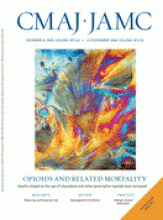Federal regulations aimed at reducing the amount of salt in prepared foods would be too cumbersome, complex and expensive to implement, according to Health Canada’s Sodium Working Group (SWG).
The SWG has decided to recommend voluntary reductions “as a first step,” Vice-Chair Mary L’Abbe says. “Voluntary, but they will be very visible and public targets. The visibility brings a certain level of motivation to meet targets. And I think you have to recognize that is not unreasonable given both the magnitude of changes that have to occur with sodium and the experience of other countries. It does take time. I think a voluntary approach with very public and very clear objectives will at least get the process started.”
The food industry “is too diverse” to expect it to comply with mandatory regulations, L’Abbe adds.
Dietitians of Canada representative Susan Barr says the voluntary guidelines will use “a targeted approach similar to that used in the United Kingdom. The specific targets, however, will be developed in consultation with Canadian food industry.”
The United Kingdom uses a colour-coded “traffic light” approach to inform consumers about salt levels within foods. Under the system, red, amber and green warnings — as determined by UK and European Commission regulations (www.eatwell.gov.uk/foodlabels/trafficlights/) — are placed on the front of food packages. If the sodium content is higher than the recommended daily intake, the product will get a red light. Label size is entirely at the discretion of manufacturers and participation is entirely voluntary but UK officials say that about 40% of composite, processed food manufacturers have joined the program since it was established in 2005 (CMAJ 2008. DOI:10.1503/cmaj.081755).
The United Kingdom’s voluntary colour-coding system for processed foods uses a traffic-light system to inform consumers about salt content. Image courtesy of UK Food Standards Agency
Barr says the food industry needs time to find alternatives to salt. “There aren’t any countries in the world that have done mandatory. While that may not be a good reason, the mandatory route is extremely cumbersome to develop all the legislation and to enforce it. … People need time to adapt to taste changes. Our food industry needs time to find other means or processes that will fulfill the function of salt.”
Mandatory regulations would be nightmarish, costly and complex, she adds. “The voluntary approach is much more flexible and allows things to be changed over time without the cumbersome process of legislation.”
The SWG was established in 2007 by former health minister Tony Clement. Its mandate was to develop guidelines aimed at helping Canadians reduce their salt consumption, which Blood Pressure Canada projects is a staggering 3500 mg of sodium per day (considerably higher than the recommended 1200 mg). The group had been expected to report within a year but it became bogged down with matters of process (CMAJ 2009. DOI:10.1503/cmaj.209-3067).
The decision to recommend a voluntary approach does not appear to sit entirely well with all SWG members. “My personal opinion is that it’s impossible to have any kind of a credible strategy unless you change some regulations,” says Bill Jeffery, national coordinator for the Centre for Science in the Public Interest, who is skeptical about the usefulness of voluntary limits.
The UK’s approach hasn’t been particularly effective, he notes. “They weren’t nearly as successful as they had hoped they would be. They wanted to reduce salt intake from nine grams per day to six grams per day. They’ve been at this for several years now, and they’ve only managed to reduce their sodium intake by a little bit less than one gram. Now that’s huge from a population health perspective. There are going to be big dividends for that. But it does expose the fact that taking a voluntary approach has some real limitations.”
The ultimate outcome will depend upon the implementation plan, Jeffery adds. “Just stating a bunch of targets and then hoping that all food companies fall into line, I think is naive.”
There’s little evidence that food industry associations are already preparing for, or actively tackling, the problem, he says. “They always point to two examples: the Canada Bread Company’s salt reduction in some of their lines of bread and Campbell’s Soup. … The entire industry has been working on this for years. Where are the other examples?”
Jeffery also expressed “considerable consternation” over the SWG’s makeup and, particularly, Barr’s involvement. The Dietitians of Canada take “a ton of money through their research foundation from the food industry,” he notes. According to its website, the organization receives research funding from such associations and companies as the Dairy Farmers of Canada, Kraft Canada Inc., McCain Foods (Canada), McDonald’s Restaurants of Canada Limited, Nestlé and Pepsi.
Barr, a professor of Food Nutrition and Health at the University of British Columbia in Vancouver, acknowledges she has done “a little bit of consulting” for the food industry as a member of the medical advisory board for ConA-gra Foods in the United States. ConA-gra Foods states on its website that it “makes many leading brands,” including Chef Boyardee, Hunt’s, Orville Redenbacher’s and PAM.
The voluntary salt reduction guidelines preferred by industry are the right approach, provided there are “very clear targets” and rigorous public monitoring, L’Abbe says.
“Right now, I think the problem would be we don’t have one solution that would fit the whole food industry,” she adds. “Regulations don’t lend themselves to having this set of targets for the baking industry, a different set of targets for processed meats. The complexity of developing a regulation that would be different for every type of food category would be challenging.”
Footnotes
-
Published at www.cmaj.ca on Nov. 10









